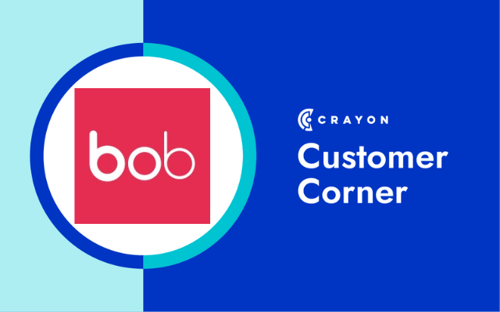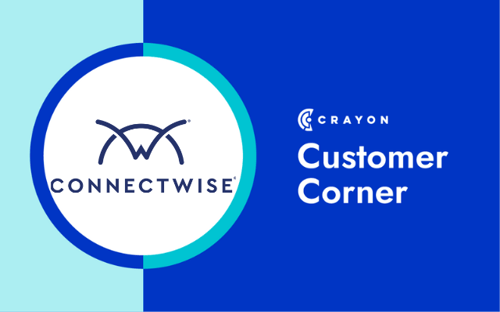"We are disruptors in our space, we don't have direct competitors."

Many times I have heard that statement, especially from startups, and it has been followed by the refrain that looking at competitors doesn’t matter. But does that mean you have nothing to learn from other companies? Does that mean you don’t compete for attention? No company exists in a vacuum, and it can often be the less direct competitors and the broader market forces that can provide great insight and inspiration.
There are multiple types of competitors:
-
Direct competitors: Top companies that come up in competitive sales situations. These are the obvious competitors, the ones everyone across sales, marketing, and product know well.
-
Indirect competitors: Major players in the industry that are well-known but don’t go head-to-head in sales conversations. This can be a wide-ranging list that can even include partners with whom you integrate or run comarketing programs.
-
Aspirational competitors: Leading companies in the broader industry that can inspire marketing opportunities. These are companies that you admire in regards to their marketing or management practices.
What is an “aspirational” competitor?
In every industry and every profession, there are the companies and individuals you admire. In the SAAS world, perhaps it’s Salesforce or Workday, in the area of design, perhaps it’s Apple or Airbnb, in the area of culture, perhaps it's HubSpot or Netflix. There is some amount of overlap in your industries, business models, or professions, but there is not a classic competitive relationship where you go head-to-head in a sales cycle. These are “aspirational” competitors - admirable companies who you compete with for attention but not sales.

Why watch your aspirational competitors?
"By the time there’s a case study in your market, you’re too late.”
It’s very possible that the companies that lead the way in their specific area of expertise will end up sharing their lessons learned in a blog or presentation. But how much time passes before that happens? How many more companies pick up on those best practices and start executing in that way in the meantime? If you wait for that blog post to come out and neatly tell you what you can learn from these leading companies, you will miss out on the true opportunity.
By monitoring their moves, you can see marketing tests in progress, such as new social strategies, content focus areas, new expertise added to their teams, and more. This allows you to follow along before the lessons are published, so that you have the opportunity to test these strategies for yourself.
Get early warning of true competitive threats
On top of the inspiration you can gain from tracking your aspirational competitors, this monitoring can double as watching for early warnings of competitiveness. If you are truly a disruptor in your space with no direct competitors, your major threat is unlikely to be a new startup popping onto the scene. It is more likely that the threat to your business would be for a major player - perhaps one tangential to you - creeping into your space and launching a similar solution.
By monitoring small “innocuous” moves, you can see if one of these companies is moving in your direction. You may see them publishing more content related to your niche, targeting keywords related to your solution, or making subtle changes to product packaging to set up for a new launch. Early warning can help you prepare to compete head-to-head with a strong competitor.
What can you learn from aspirational competitors?
The specific opportunities uncovered by monitoring aspirational competitors will vary from industry to industry, but you're likely to see at least some of these situations arise.
Content Marketing & PR Best Practices
- Learn what content performs well - See where companies are investing their content marketing efforts, the type and topic of that content, and brainstorm analogous content you could create that could perform similarly well.
- Learn what social strategies work well - Which channels work best for these companies? How often do they post and what do they publish? Identify strategies to test yourself to see if you have similar luck.
- Find opportunities for content comarketing - Since you do not compete head-to-head, that may open up opportunities for comarketing. Is there a content gap you could fill? Do they have a key topic that you could add to? Comarketing with a bigger player can help boost your content marketing efforts significantly.
- See what stories get news coverage - News coverage can help with SEO, branding, lead generation, and more. Your aspirational competitors are likely to be ahead of you in this area, so what can you learn about the stories and content that get them coverage?
- Jump on relevant social conversations - If you are solving a new market problem, it is likely that prospects are not yet seeking out a solution like yours. One way to get in front of the right people is to jump into tangential conversations. When your aspirational competitors are active or mentioned on Quora, Twitter, etc., that can be a good opportunity to jump in and contribute.
Partnership Opportunities
- Identify relevant events to join - Especially if you are a disruptor in your market, it may not be obvious which events to attend. Looking at events your aspirational competitors sponsor, speak at, and attend, can provide good targets for you.
- Jump on opportunities to contribute content - These companies may run their own events where they need speakers, create content where they need input, or other situations where there is an explicit call for expert input. This is a great opportunity to build a mutually beneficial relationship.
- Identify complementary product opportunities - Watching for changes in product packaging and monitoring product investment through features released, removed, or enhanced, can surface ideas for complementary product integrations. There is more effort involved to integrate, but this can lead to a productive, long-term relationship.
- Create links to additional companies - In addition to monitoring your aspirational competitors, it may be worthwhile to monitor their competitors to see how their specific industry niche sees each company. This can provide an opportunity to build partnerships with other companies in the same tangential space.
Campaign Strategies
- Inspire new campaigns and tests - New campaigns launched (and each of their components, like landing pages and content offers) can provide great inspiration for campaigns to test yourself. You can leverage your competitors' resources by way of letting them test and launch many campaigns and implementing the best ideas for your company.
- Inspire design tests and changes - Changes to webpage designs, call-to-action placement, page layout, and more, can inspire tests to run on your own website. An aspirational competitor may have more traffic and data to play with, so you can piggy back on their great ideas and tests.
- Identify potential marketing channels - When another company has more resources, there's all the more reason that they will explore and try more marketing channels. Monitoring where and how they leverage different channels can provide direction for which channels you should try as well.
This list is simply a sampling of the many ways you can turn your admiration of leading companies into a strategy to improve your own marketing efforts. As a company bringing to market a new type of solution (Crayon Intel Pro, or tracking major content and design updates from a broader set of companies with Crayon Intel Free. (You can sign up for a free account to track unlimited companies here.)
Have you leveraged aspirational competitive intel in other ways? We'd love to hear about it!

Related Blog Posts
Popular Posts
-
 The 8 Free Market Research Tools and Resources You Need to Know
The 8 Free Market Research Tools and Resources You Need to Know
-
 How to Measure Product Launch Success: 12 KPIs You Should Be Tracking
How to Measure Product Launch Success: 12 KPIs You Should Be Tracking
-
 24 Questions to Consider for Your Next SWOT Analysis
24 Questions to Consider for Your Next SWOT Analysis
-
 How to Create a Competitive Matrix (Step-by-Step Guide With Examples + Free Templates)
How to Create a Competitive Matrix (Step-by-Step Guide With Examples + Free Templates)
-
 6 Competitive Advantage Examples From the Real World
6 Competitive Advantage Examples From the Real World





